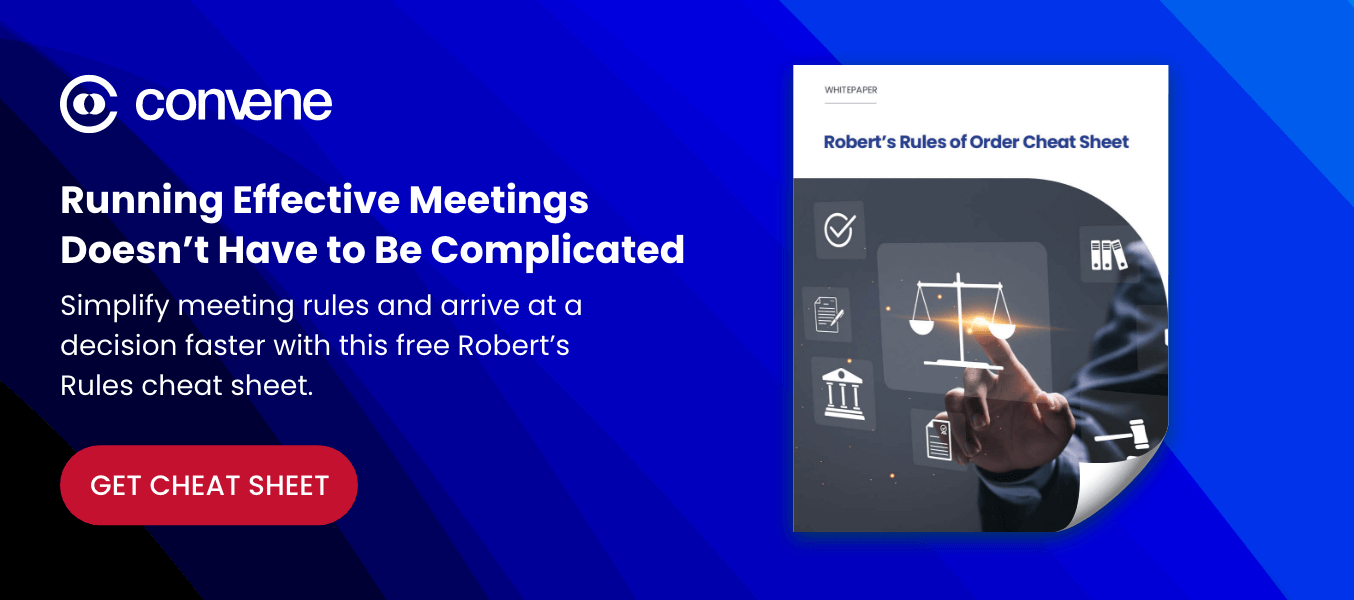When running a business, one of its key success factors lie in the organization’s corporate governance. Essential to this, are the decisions and direction of the board, and by extension, the board meeting.
In this article, we discuss what contributes to the success of such meetings, and how organizations can go about conducting them.
When an organization involves itself in corporate governance, one of the essential aspects of it includes holding regular board meetings. Despite the fact that each head overlooks and manages his or her own department, there is much more to board meetings than meets the eye. Holding board meetings allow the executives to come together and handle company-wide concerns or affairs that need their attention. With the proper planning and execution, a firm will be able to overcome hurdles and achieve the standards they’ve established. As such, there are a number of pointers a firm must keep in mind to orchestrate successful board meetings.
Basically, the anatomy of a board meeting is composed of key discussions and decision-making by executives and the board on company performance, critical issues, and strategic objectives. To ensure success, the entire meeting cycle from preparation to post-meeting must be considered.
Give Prior Notice to Board Directors
The most crucial part of board meetings is the presence of its board directors and stakeholders. Given the typical schedule of board directors, meetings must be scheduled well in advance to avoid any conflicts. Moreover, directors need adequate time to review board packs and prepare for the meeting. Failure to do this could otherwise result in uninformed and unproductive sessions. As such, for a board meeting to be successful, organizers should make sure to duly notify attendees and provide them with all relevant documents well before the actual meeting.
In order to effectively manage this pre-meeting process, organizers will find board meeting solutions to be quite useful. With such solutions, organizers can send and manage invites, as well as easily compile and distribute board packs. Solving the problem of board meeting logistics, such tools save companies valuable time and resources. Digital tools will greatly help to ensure efficient preparations on key action items, intuitive presentation tools, and documents which will result in a more successful and engaging meeting.
Read: Beginner’s Guide to Board Meeting Management Software
Prepare a Substantive Board Meeting Agenda
It is a no-brainer that every meeting needs to have an agenda. However, there is a stark difference between a substantive and non-substantive agenda. Organizers should ensure that the agenda covers the important issues that truly require the board’s attention. At the same time, preparing the agenda also means preparing the supporting documents and materials for directors to review. Directors need this in order to understand the context of each concern and subsequently sound off their remarks during the meeting proper. Additionally, board members will be able to highlight aspects of the board material that need to be raised prior to the meeting.
Being able to have a substantive and structured agenda will ensure productive discussions and minimize distractions such as rambling, side conversations, and unnecessary chatter.
Read: Developing an Effective Board Meeting Agenda
Keep a Detailed Minutes of the Board Meeting
Given the importance of board decisions, each meeting’s proceedings must be properly recorded in the meeting minutes. The board secretary or minutes taker must create a summary of each discussion topic and provide sufficient information for directors to make it easier on their end if they need to. Deliberations, comments, and suggestions must also be included for the benefit of those who were unable to attend the meeting so that they will be able to provide their own insights.
Minutes are especially important as they are the documents board members will go back to when recalling important points of discussion that happened during the meeting. Making these comprehensive enough and accessible by everyone is a requirement, especially since all board members whether present or not must be in the know of any important matters.
Read: Transforming the Way You Take Meeting Minutes
Promote High Engagement in Meetings
The board meeting serves as an area of deliberation of top management concerns and issues to be addressed by the firm’s executives. Hence, successfully conducting a board meeting means creating an engaging environment where directors can exchange varying outlooks, opinions, and solutions regarding the topic at hand. However, this can be a challenge especially when conducting virtual or remote board meetings. In this case, board meeting platforms that offer additional collaboration tools, video conferencing features, etc., are particularly helpful.
A board meeting should not merely be a one-sided presentation, It should invoke a collaborative discussion, with back and forth insights being given by all relevant members of the board on the topic in question.
Draft a Resolution of Corporate Decisions
Another key attribute of a successful board meeting is proper documentation. Drafting a resolution structures the meeting process as it documents the business issue, enumerates the decision of the board, and includes the signature of the board members. Resolutions also become a tool to keep track of corporate activities both old and new. Properly documented, resolutions are valuable when planning future meetings and setting new objectives and strategies of the company.
Considering the importance of board meeting proceedings, organizations should ensure that they run them well. As entire company operations often hinge on board decisions, these meetings must be thoroughly prepared for. With so much at stake, companies should evaluate whether they adhere to the best practices in conducting such meetings. At the same time, they should check whether they have the features, tools, and technology necessary to run these meetings effectively and efficiently.
—
Executive boards in over 100 countries use Convene to streamline their operations and conduct effective board meetings. Built with corporate governance best practices in mind, Convene encourages collaboration, accountability, and efficiency in the board meeting process.
Find out more information about our product or book a free trial.










